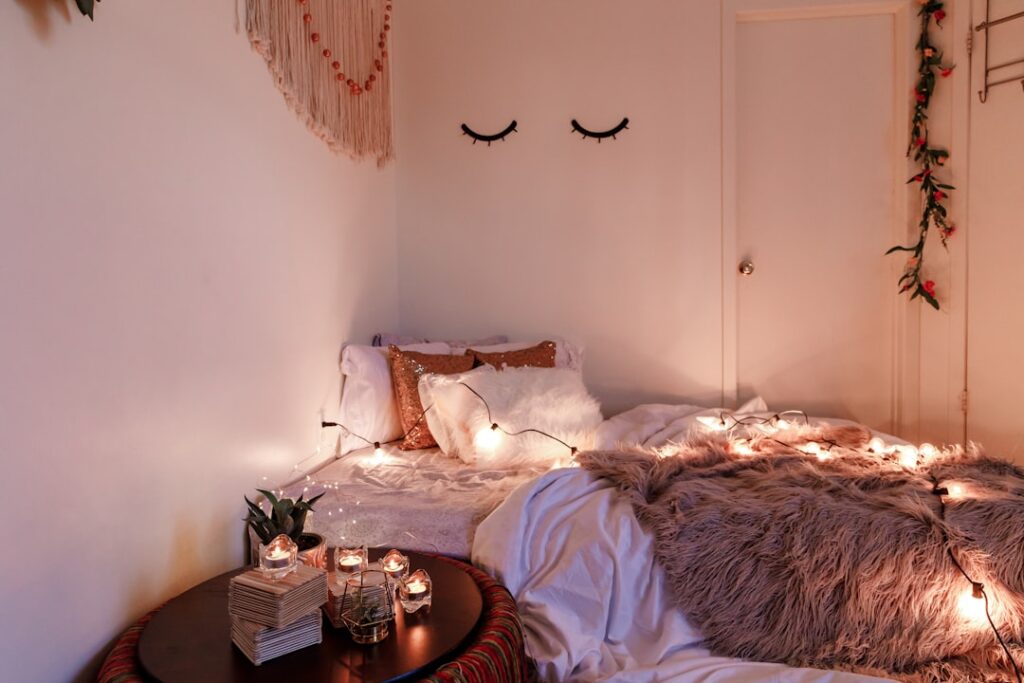The relationship between ambient temperature and sleep quality isn’t just a matter of comfort; it’s a fundamental biological process. Your body’s circadian rhythm, the internal 24-hour clock that governs sleep-wake cycles, is intrinsically linked to thermoregulation. For sleep to be initiated and maintained, your core body temperature needs to drop by approximately two to three degrees Fahrenheit. When nighttime temperatures remain high, this crucial physiological signal is disrupted, interfering with melatonin production and leading to the fragmented, unsatisfying sleep known as heat insomnia.
Fortunately, by applying some principles of human physiology and physics, you can strategically manage your environment and your body’s temperature to reclaim restful summer nights. Here are six evidence-based strategies to cool your way to better sleep.
1. Master Your Microclimate Through Strategic Airflow
While air conditioning is a direct solution, it’s not always available or economical. Instead, you can manipulate your room’s airflow based on thermodynamic principles.
- Implement Cross-Ventilation: By opening windows on opposite sides of your room or home, you create a pressure differential that encourages airflow. This convective heat transfer is more effective at removing accumulated warm air than a single open window.
- Optimize Fan Placement: A fan doesn’t cool the air; it facilitates evaporative cooling from your skin. For maximum effect, place a bowl of ice or frozen water bottles in front of a fan. The air blows over the cold surface, causing a slight drop in temperature and an increase in moisture, which enhances the cooling sensation as it evaporates from your skin. During the day, use blackout curtains to block solar radiation, preventing your room from acting as a greenhouse.
2. Leverage the “Warm Bath Paradox”
It may seem counterintuitive, but a study published in Sleep Medicine Reviews found that taking a warm (not hot) bath 90 minutes before bedtime can significantly improve sleep quality. This isn’t about warming you up; it’s about triggering a more efficient cool-down.
The warm water increases blood flow to the surface of your skin, particularly your hands and feet. Once you get out of the bath, this vasodilation allows your body to dissipate internal heat more rapidly into the cooler ambient air. This accelerated drop in core body temperature sends a powerful signal to your brain’s pineal gland that it’s time to initiate sleep. The key is timing; the process requires about 90 minutes for optimal effect.
3. Re-Engineer Your Bedding for Heat Dissipation
The materials you sleep on and under play a critical role in thermoregulation. Many synthetic fabrics, like polyester or memory foam without cooling technology, are insulators that trap body heat.
- Fabric Selection: Opt for bedding made from natural, breathable fibers with high moisture-wicking properties. Linen, bamboo, and long-staple cotton (like Egyptian or Pima) have superior breathability, allowing air to circulate and moisture to evaporate, preventing heat and sweat from becoming trapped against your skin.
- Cooling Technology: Consider investing in a mattress topper or pillow that utilizes cooling technology. These often incorporate gel-infused foam or phase-change materials (PCMs), which are substances that absorb and store a large amount of heat as they transition from a solid to a liquid state, actively drawing heat away from your body.
4. Hydrate for Optimal Thermoregulation
Dehydration is a significant contributor to elevated body temperature. When you’re dehydrated, your blood volume decreases, forcing your heart to work harder to circulate blood, which in turn generates more metabolic heat. Furthermore, adequate hydration is essential for sweating, your body’s primary cooling mechanism.
Focus on consistent hydration throughout the day rather than chugging water right before bed, which can lead to sleep-disrupting bathroom trips (nocturia). In the evening, consider a small glass of water or an electrolyte-rich beverage like coconut water. Electrolytes are crucial for proper fluid balance and muscle function, both of which are important for restful sleep.
5. Apply the Physics of Evaporative Cooling Directly
The “Egyptian Method” is a low-tech but highly effective technique based on a simple principle of physics: evaporation is an endothermic process, meaning it requires energy in the form of heat.
To try it, dampen a thin sheet or a large towel in cool water and wring it out until it’s no longer dripping. Place a dry towel on your mattress to protect it, and then sleep with the damp sheet as your blanket. As the water in the sheet evaporates throughout the night, it will continuously draw heat away from your body, providing a sustained cooling effect.
6. Adjust Your Pre-Sleep Nutrition
The digestive process itself generates heat, an effect known as the thermic effect of food (TEF). Large meals, particularly those high in protein and fat, require more energy to metabolize and can significantly increase your core body temperature for several hours after eating.
- Time Your Meals: Eat your main evening meal at least three hours before you plan to go to sleep.
- Avoid Thermogenic Substances: Alcohol and caffeine can both interfere with the body’s ability to regulate temperature and disrupt sleep architecture. While alcohol may initially make you feel drowsy, it suppresses REM sleep and can lead to awakenings later in the night.
- Choose Wisely: If you need a pre-sleep snack, opt for something small and carbohydrate-based, which has a lower TEF and may help promote sleep by making tryptophan more available to the brain.
Photo by Shashi Chaturvedula on Unsplash

